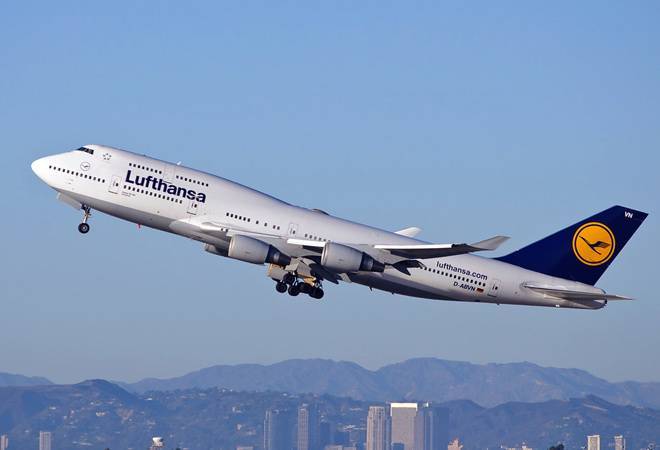In today’s fast-paced world, the aviation industry has seen significant advancements not only in aircraft technology but also in Aircraft Interior Design. Passengers’ expectations have evolved, demanding not just comfort but also aesthetics and functionality when they travel. Aircraft interior design trends are constantly changing to meet these demands and enhance the overall flying experience. In this article, we will explore the latest trends in aircraft interior design, from innovative materials to cutting-edge technology, that are shaping the way we fly.
1. Sustainable Materials
Sustainability is a hot topic across industries, including aviation. Aircraft interior designers are increasingly turning to sustainable materials such as recycled plastics, organic fabrics, and renewable resources. These materials not only reduce the environmental impact of aviation but also create a more eco-friendly and appealing cabin environment.
2. Mood Lighting
Aircraft interiors are being transformed with the use of mood lighting systems. LED lighting, in particular, allows airlines to change the cabin ambiance, offering passengers a more relaxing and comfortable journey. Airlines can adjust lighting to simulate sunrise or sunset, helping passengers combat jet lag and enjoy a more restful flight.
3. Space Optimization
Space is a precious commodity in an aircraft cabin. Aircraft Interior Design are now focusing on innovative ways to maximize space and enhance passenger comfort. This includes reimagining seating arrangements, storage solutions, and even creating multifunctional seating that can transform into beds or workstations.
4. Personalization
Airlines are recognizing the importance of personalization in enhancing the passenger experience. Aircraft interiors are now equipped with advanced systems that allow passengers to customize their environment. From adjusting seat positions to choosing their preferred lighting and temperature settings, personalization is becoming a standard feature.
5. Connectivity
In the digital age, staying connected is crucial. The latest aircraft interior designs include seamless connectivity options, ensuring that passengers can work, stream, or stay in touch with loved ones while in the air. High-speed Wi-Fi and advanced entertainment systems are becoming standard offerings.
6. Wellness Features
Passenger well-being is a growing concern for airlines. Aircraft interiors are incorporating wellness features such as better cabin air quality, noise reduction technologies, and ergonomic seating. These enhancements contribute to a more comfortable and healthier flying experience.
7. Artistic Elements
Aircraft interiors are no longer just functional spaces; they are also becoming works of art. Airlines are collaborating with renowned Aircraft Interior Design and artists to create visually stunning cabins that captivate passengers. From unique cabin murals to artistic seat designs, artistry is making its mark.
8. Virtual Reality
Virtual reality (VR) is making its way into aircraft interior design. VR headsets offer passengers immersive entertainment experiences, taking them on virtual journeys during their flights. This technology adds a new dimension to in-flight entertainment.
9. Sustainable Practices
Beyond materials, airlines are adopting sustainable practices in their interior designs. This includes reducing waste through modular cabin components, improved maintenance processes, and Aircraft Interior Design cabins for longer service life.
10. Biometrics and Touchless Solutions
In a post-pandemic world, touchless solutions are becoming more prevalent in aircraft interiors. Biometric systems for boarding and in-flight services are enhancing security and minimizing physical contact.
11. Ultra-Luxury Cabins
For premium travelers, ultra-luxury cabins are a growing trend. Airlines are investing in opulent interiors, featuring plush seating, high-end finishes, and exclusive amenities for a truly extravagant flying experience.
12. Sustainability Certifications
Airlines and aircraft manufacturers are seeking sustainability certifications for their interior designs. These certifications assure passengers that they are flying with environmentally responsible carriers.
13. Inclusive Design
Airlines are making strides in inclusive Aircraft Interior Design, ensuring that passengers with disabilities have equal access to the same level of comfort and service as other travelers.
14. Nature-Inspired Interiors
Bringing elements of nature into the cabin is a trend gaining momentum. Natural colors, textures, and materials create a soothing and calming atmosphere for passengers.
15. Retro Revival
In a nod to nostalgia, some airlines are embracing retro interior designs, offering passengers a taste of the past with a modern twist.
In conclusion, Aircraft Interior Design is evolving rapidly to meet the changing demands and expectations of passengers. From sustainability to personalization, these trends are reshaping the flying experience. As technology continues to advance, we can expect even more exciting innovations in the world of aircraft interior design.
FAQs
1. How are sustainable materials being incorporated into aircraft interiors? Airlines are using recycled plastics, organic fabrics, and renewable resources for seating, cabin walls, and other interior components.
2. What is the significance of mood lighting in aircraft interiors? Mood lighting systems can create a relaxing ambiance, combat jet lag, and enhance the overall passenger experience.
3. Are virtual reality headsets available on all flights? Not on all flights, but some airlines are incorporating VR headsets as part of their in-flight entertainment options.
4. How do touchless solutions improve the flying experience? Touchless solutions, such as biometrics, enhance security and reduce physical contact during boarding and in-flight services.
5. What is the aim of sustainability certifications for aircraft interiors? Sustainability certifications assure passengers that airlines are committed to environmentally responsible interior design practices.





